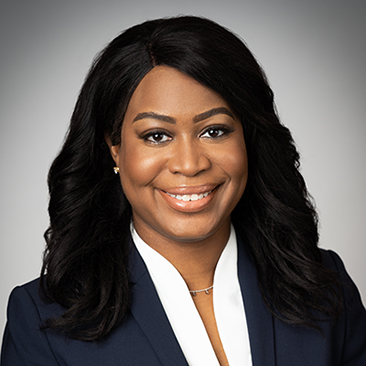The holidays came early for the United States Trustee (the “U.S. Trustee”) on November, 3, 2020, when a three-judge panel of the United States Circuit Court for the Fifth Circuit, on direct appeal, reversed the bankruptcy court and upheld the constitutionality of a 2017 increase to quarterly fees payable to the U.S. Trustee in Hobbs v. Buffets LLC (In re Buffets LLC), No. 19-50765, 2020 U.S. App. LEXIS 34866 (5th Cir. Nov. 3, 2020). Although the Fifth Circuit’s opinion addresses a variety of constitutional challenges to the recent increase to U.S. Trustee fees, the “the main event” was “whether [the] fee increase violates constitutional uniformity requirements.” Id. at *16. The court’s 2-1 decision, finding no constitutional infirmity with the fee increase, widens the split in authority on the issue. To that end, it likewise sows further uncertainty with respect to the ongoing viability of a decades-old “dual system:” with the majority of jurisdictions operating under the United States Trustee Program and a small minority using Bankruptcy Administrators.
The Appetizer: Background on U.S. Trustee Fees
As a consequence of operating in bankruptcy, even after a chapter 11 plan is confirmed, section 1930 of title 28 of the United States Code imposes a quarterly fee, which amount depends on the value of “disbursements” made by the debtor entity during the applicable quarter. See 28 U.S.C. § 1930(a)(6). Prior to 2017, $30,000 was the maximum quarterly fee for a chapter 11 debtor. See § 1930(a)(6)(A). But in 2017, Congress amended the statute to fund a budget shortfall—which provides that, during fiscal years 2018–2022, (i) “if the balance in the United States Trustee System Fund . . . is less than $200,000,000,” (ii) and a debtor has disbursements exceeding $1 million per quarter, then the debtor’s maximum quarterly U.S. Trustee fees are the lesser of $250,000 or 1% of total disbursements. § 1930(a)(6)(B). Because the U.S. Trustee System Fund was and continues to be under the statutory threshold, the amendment brought an 833% increase in maximum quarterly fees starting in 2018. This set off alarm bells for debtors that filed chapter 11 before the 2017 amendments but were stuck in chapter 11 after the increase. 28 U.S.C. § 1930(a)(6)(B).
Importantly, however, not all similarly situated chapter 11 debtors bore the same burden, specifically those chapter 11 debtors operating in six judicial districts in Alabama and North Carolina. Due to congressional politics (beyond the scope of the Weil Restructuring Blog), these six jurisdictions do not utilize the U.S. Trustee program as the bankruptcy “watchdog;” rather, they use the Bankruptcy Administrator (“BA”) program. For debtors in these BA districts, chapter 11 quarterly fees are determined by a different statute (§ 1930(a)(7)), which has two consequences with respect to the 2017 amendments: first, the quarterly fee increase was initially discretionary for BA districts, so the increase did not become effective in those districts until October 2018, nine months after it became effective in U.S. Trustee districts; second, the amended quarterly fee schedule only applied to those BA district debtors that filed for chapter 11 after October 2018.
First Course: Bankruptcy Court Finds the Fee Increase Violates U.S. Constitution
Buffets, LLC (together with its debtor-affiliates, “Buffets”) filed chapter 11 petitions in the Bankruptcy Court for the Western District of Texas (San Antonio Division) on March 7, 2016, confirmed a chapter 11 plan on April 27, 2017, and, pursuant to that plan, was substantively consolidated with its debtor-affiliates thereafter. Following plan confirmation, Buffets (like many other post-confirmation chapter 11 debtors) continued to operate its business as a debtor-in-possession and make distributions to creditors under the confirmed plan. When Buffets commenced chapter 11 cases and confirmed a chapter 11 plan—both prior to the 2017 amendments to section 1930—Buffets anticipated that it would pay no more than $30,000 per quarter in U.S. Trustee fees. Imagine the heartburn caused by a mid-meal 833% increase in the bill.
Buffets thus challenged the 2017 increase to quarterly fees on statutory and constitutional grounds, primarily arguing that the differences in fees levied against debtors in U.S. Trustee districts (including Texas) as opposed to BA districts (just North Carolina and Alabama) violated constitutional requirements of uniformity. See U.S. const. art. I, § 8, cl. 1, 4. The bankruptcy court agreed with Buffets, in part, and held, among other things, that the increase violated: (i) constitutional requirement of uniformity because debtors in BA districts did not face the same increase as debtors in U.S. Trustee districts, like Buffets; (ii) constitutional prohibitions against retroactive laws because the statute was applied to debtors like Buffets that filed chapter 11 before the amendments but remained in bankruptcy thereafter, and (iii) the Due Process Clause. In re Buffets, LLC, 597 B.R. 588 (Bankr. W.D. Tex. 2019). The bankruptcy court, however, denied Buffets’ statutory challenge, which sought a narrow reading of the word “disbursements” in section 1930 to include only distributions to creditors prescribed by a chapter 11 plan (as opposed to plan distributions plus operating expenses, like plates and napkins). The U.S. Trustee appealed directly from the bankruptcy to the circuit court, and Buffets cross-appealed the statutory issue. The table was set for the main course.
The Main: A Divided Fifth Circuit Reverses
Ordering a main dish can be tricky, much like the choice faced by the Fifth Circuit in Buffets in determining which constitutional provision to apply when analyzing the uniformity requirement. Depending on the interpretation of U.S. Trustee fees, two constitutional provisions could be implicated. First, as the bankruptcy court did below, U.S. Trustee fees could be treated as “taxes” under the “Uniformity Clause” of the Constitution, which provides Congress authority to “lay and collect Taxes, Duties, Imposts and Excises . . . but all Duties, Imposts and Excises shall be uniform throughout the United States.” U.S. Const. art. I, § 8, cl. 1; see Buffets, 597 B.R. at 595. Second, as the Fifth Circuit determined, U.S. Trustee fees could be considered “user fees,” analyzed under the “Bankruptcy Clause,” which grants Congress the power to establish “uniform Laws on the subject of Bankruptcies throughout the United States.” U.S. Const. art. I, § 8, cl. 4. This distinction matters—partially because, as the Fifth Circuit noted, scant case law exists interpreting the Bankruptcy Clause. Rather, case law interpreting the Bankruptcy Clause has established that it primarily forbids two things: (i) private bankruptcy bills and (ii) “arbitrary regional differences” in bankruptcy laws. In re Reese, 91 F.3d 37, 39 (7th Cir. 1996). Thus, because U.S. Trustee fees did not target individual debtors (like a bill of attainder), the court focused on the latter prohibition and analyzed whether the difference in quarterly fees between a debtor in Texas and a debtor in North Carolina resulted from “arbitrary regional differences.”
The Fifth Circuit answered “no,” finding that any regional differences between the fees paid by debtors in U.S. Trustee districts versus those paid by debtors in BA districts did not stem from an arbitrary distinction. To that end, the court noted that “the uniformity requirement ‘is not a straightjacket that forbids Congress to distinguish among classes of debtors’ . . . [n]or does it bar every law that allows for a different outcome depending on where a bankruptcy is filed.” Buffets, 2020 U.S. App. LEXIS 34866, at *18 (quoting Ry. Lab. Execs. Ass’n v. Gibbons, 455 U.S. 457, 470 n.11 (1982)) (citations omitted). Rather, the Fifth Circuit found that the difference between a debtor in Texas and a debtor in North Carolina is that the Texas debtor utilizes the U.S. Trustee system that quarterly fees finance while the North Carolina debtor does not. To the court, this difference (rooted in program usage rather than geography) justified the discrepancy in quarterly fee amounts. Therefore, the court determined that the difference in quarterly fees relates to the difference in systems used, not in “regional differences” in and of themselves. In reaching that conclusion, the court pointed to the amended statute itself, which only increases quarterly fees (i) temporarily, for five years (2018–2022), and (ii) if there is a shortfall in funding for the United States Trustee System Fund (i.e., “less than $200,000,000”). 28 U.S.C. § 1930(a)(6)(B). In other words, the debtors using the underfunded system (in U.S. Trustee districts) should pick up the tab.
As Judge Clement asserted in her dissent, however, the majority’s opinion assumes that debtors are patrons ordering from the menu themselves. On the contrary, to Judge Clement, “[g]rouping debtors into UST and BA districts is itself an arbitrary regional difference.” Buffets, 2020 U.S. App. LEXIS 34866, at *29 (Clement, J., dissenting) (emphasis added). Because of that, in her view, Congress and the Fifth Circuit created a tautology: “Congress can justify treating bankrupts differently because it has chosen to treat them differently (higher fees because different programs).” Id. Indeed, the Ninth Circuit reached the same conclusion 25 years ago in St. Angelo v. Victoria Farms, Inc., 38 F.3d 1525, 1533 (9th Cir. 1994), amended by 46 F.3d 969 (9th Cir. 1995). In St. Angelo, the Ninth Circuit held that the existence of dual systems—with the BA program in Alabama and North Carolina and the U.S. Trustee program in the remaining states—was unconstitutionally non-uniform because the fee system was not uniform. Rather than mop up the purported constitutional mess created by the dual systems, however, Judge Clement notes that Congress merely provided a napkin and changed the fee structure to ensure debtors nationwide paid the same tab, regardless of where they filed. But the results of the temporary approach, to the dissent’s point, have returned to ruin another meal.
Dessert (or Another Plate?)
Despite the disagreement on uniformity, the Fifth Circuit did uniformly rule on the remaining issues. Namely, the Fifth Circuit (with Judge Clement joining) held that: (i) the 2017 amendments to the quarterly fee schedule were not retroactively applied to debtors like Buffets who filed before the increase went effective, as fees are charged on a prospective basis, based upon future disbursements; (ii) no due process violation arose because Congress’s decision to increase the fees (even by such a large quantum) had roots in a rational basis (i.e., to fund the United States Trustee System Fund); and (iii) “disbursements” used in section 1930 included both plan distributions and ordinary course expenses.
Nevertheless, on the uniformity issue, an appetite still exists. Seemingly setting the table for litigation to come, Judge Clement’s dissent noted: “Two laws are not a uniform law, so I would hold that the permanent division of the country into UST districts and BA districts violates the Bankruptcy Clause.” Buffets, 2020 U.S. App. LEXIS 34866, at *33 (Clement, J., dissenting). And courts across the country continue split with respect to the uniformity issue. Compare Acadiana Mgmt. Grp., LLC v. United States, No. 19-496C, 2020 WL 7038411, at *9 (Fed. Cl. Nov. 30, 2020) (“The court agrees [with Buffets]; the amendment to § 1930 is not a violation of the uniformity requirement of the Bankruptcy clause of the Constitution or the Due Process clause.”); In re MF Glob. Holdings Ltd., 615 B.R. 415, 420, 444–48 (Bankr. S.D.N.Y. 2020) (Bernstein & Glenn, JJ.) (finding no uniformity problem but noting that, “[p]articularly in light of the split in bankruptcy court decisions addressing these important issues that require a uniform result, whatever is decided here is certainly not going to be the last word on the issues.”); In re Exide Techs., 611 B.R. 21, 26 (Bankr. D. Del. 2020) (Walrath, J.) (holding that the fee increase did not violate uniformity), with In re Circuit City Stores, Inc., 606 B.R. 260, 268–69 (Bankr. E.D. Va. 2019) (Huennekens, J.) (finding constitutional infirmity with lack of uniformity under both the Uniformity Clause and the Bankruptcy Clause); In re Life Partners Holdings, Inc., 606 B.R. 277, 284–85 (Bankr. N.D. Tex. 2019) (Mullin, J.) (finding same under both the Uniformity Clause and the Bankruptcy Clause).
So grab a clean plate, put on those stretchy pants, and get ready for another round at Buffets.
Contributor(s)






















